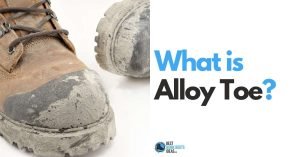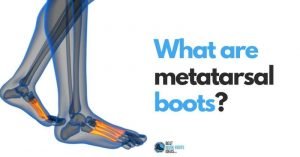Are Steel Toe Boots Good For Motorcycle Riding? Ride Free and Protect Your Feet
![Are Steel Toe Boots Good for Motorcycle Riding [featured image]](https://www.bestworkbootsideas.com/wp-content/uploads/2022/02/are-steel-toe-boots-good-for-motorcycle-riding-featured-image.jpg)
While steel toe boots are great for many work and life activities, riding a motorcycle is not one of them. There are dangers associated with riding a motorcycle that steel toe boots are not well equipped to deal with, and it’s inadvisable to use them for this purpose.
In this article, I’ll detail the specific reasons why you should avoid using your steel toe footwear for riding. I’ll also provide viable footwear alternatives so you can enjoy your time on the open road without unnecessary risks.
Contents
Why Are Steel Toe Boots Bad For Riding Motorcycles?
It’s not specifically the steel toe that makes a bad choice, but rather the common design features in steel toe boots. This footwear style protects toes from crushing and falling objects but fails to provide the extra support and protection to ankles and calves that riding requires.
Below, I’ll give the specific ways in which run-of-the-mill work boots will come up short in providing the type of protection that a motorcycle rider would want from their footwear.
I’m not here to discuss the entire outfit that would be advisable for a serious rider to wear; that’s beyond the focus of our website. Using an extremely appropriate pun here, I’m going to stay in my lane and keep it focused on keeping your feet and adjacent areas safe.
If this topic interests you and you want to learn more, this article in Popular Mechanics is a great resource. It does a much more thorough job covering everything an unseasoned rider would be wise to consider before getting out on the open road, not just footwear.
Height
The average work boot will range from 6 to 8 inches in height, assuming we’re not talking about lineman or logger boots. This is not substantial enough to provide the protection required for someone cruising along at 40, 60, or even 100 miles an hour.
A study on motorcycle injuries concluded that 55% of injuries are to the lower extremities (your legs). This makes it of utmost importance that the footwear a rider chooses to wear covers as much of the leg as possible.
For the same reason that linemen and loggers benefit from added protection going beyond their ankle and encompassing the shin, motorcycle riders need to be prepared for the worst. It’s not pleasant to think about, but as anyone that has driven for a substantial amount of time can attest to, sometimes flying objects are a part of the driving experience.
What kind of situations am I talking about? Driving behind a demolition truck with loose materials escaping the truck bed. A nearby vehicle kicking up debris in the road (a screw, a shredded tire), or even something as simple as a stone in the road.
Any of these objects launched at your body at any speed can cause serious injury to an unprepared rider.
There’s the adage that a penny dropped from the Empire State Building would have enough power to crack someone’s skull if it landed correctly. While this is a bit hyperbolic, the point is clear: even a small object moving at fast enough speeds can do serious damage to the human body.
Heat
Beyond the protection against flying objects and abrasion provided by taller riding boots, heat is a serious concern. Unlike a car, where the engine and exhaust are located far from the driver, on a motorcycle, there is a surplus of red-hot metal situated just inches from your ankles and calves while riding.
While you might say to yourself, “I’m an excellent rider, and my reflexes are second to none,” and that may be true, there’s more to consider. Suppose your excellent reflexes help you avoid an obstacle in the road; what happens then? You veer the bike (and your body) to the side, and as a result, press a burning hot chunk of metal right into your calf.
The best riders in the world will find themselves incapable of not reflexively pulling away from metal burning their skin. This reflexive action might, and likely will, result in you jerking the handlebars into traffic, a light post, or right off the road.
Support
Steel toe work boots provide more than enough support for ankles as the user walks along cement floors or uneven natural terrain. Unfortunately, they don’t offer the levels of support needed for a rider flying along a road at high speeds.
Motorcycle boots or riding boots are often designed with additional straps and belts that make sure the foot, ankle, and leg all operate as one. This ensures that in the case of an accident, the different parts of your lower legs don’t all twist in different directions, causing far greater injury.
Strength
While full-grain leather is an excellent material for handling bumps, lumps, and bruises resulting from minor accidents, it’s not a magical material. Speaking from personal experience, I’ve had a full-grain leather belt rip in two from simply falling off a skateboard at speeds of 25 mph. You don’t even want to know what happened to my khaki shorts; they simply ceased to exist after I hit the ground.
25 mph is generally the slowest any vehicle will be moving on American roads. Very often, you would be moving far faster. This means that the thickness of the full-grain leather used for most steel-toe work boots can’t handle the stress of hitting the pavement at the speeds you would be traveling while riding a motorcycle.
Add to this discussion of strength the possibility that your steel toe boots are built with cement construction. You’re looking at a situation where your boots literally fall to pieces at the very moment that you need them the most.
This is not to say that some motorcycle boots aren’t made with full-grain leather; many are! The difference is that they will be made with far thicker leather and more secure construction methods.
Waterproofing
Many work boots market themselves as being waterproof or, at the very least, water-resistant. When you’re traveling down the road in the rain, however fast, these claims become a bit shaky.
It’s simply unrealistic to assume that the guarantees made by a work boot designed for walking and a riding boot designed for high speeds are going to provide the same level of protection for your feet from water creeping in past the seams.
Additional Features
While it’s true that some steel toe work boots will come with puncture-resistant and oil-resistant soles, that’s not a guarantee in every pair. These are features that anyone riding a motorcycle will absolutely want as they travel.
Roads, even the best of them, are full of uncertainties. There will be times when putting your foot down (literally) will be a necessity for your safety. At these times, it’s of utmost importance that you can rely on your boots to protect the soles of your feet from anything puncturing the soles of your boots.
It’s equally important that your outsoles are resistant to any oil patches that might exist where you need to stop, and you’re able to get a firm grip instead of sliding along to an injury or, God forbid, a fatality.
Wrapping Up
Steel toe boots are great for many things, and you might be tempted to avoid spending the extra cash for a pair of proper motorcycle boots, telling yourself that what you’ve already got is enough. I can’t encourage you strongly enough, don’t cut corners in this department.
There’s a reason that motorcycle boots exist, and it’s not simply to separate you from your money. This boot style has specific design features that can prevent life-changing injuries from occurring. With that in mind, it’s worth every penny.


![Are Steel Toe Boots Safe [featured image]](https://www.bestworkbootsideas.com/wp-content/uploads/2022/03/are-steel-toe-boots-safe-featured-image-300x157.jpg)
![What is the Purpose of Steel Toe Boots [featured image]](https://www.bestworkbootsideas.com/wp-content/uploads/2022/05/What-is-the-Purpose-of-Steel-Toe-Boots-featured-image-300x157.jpg)

